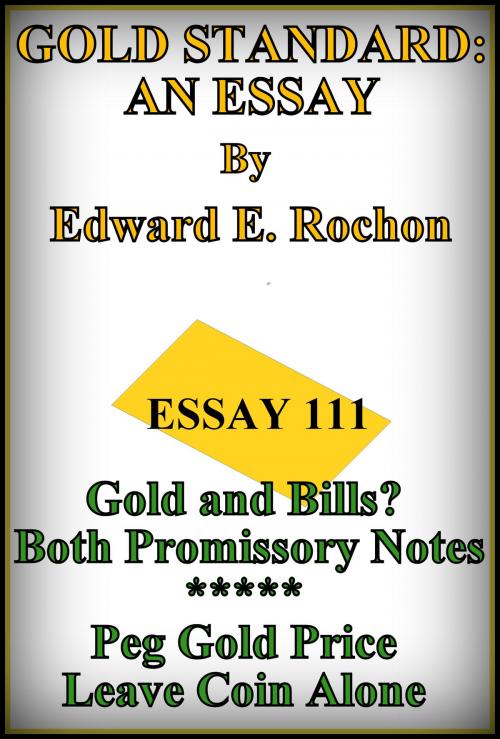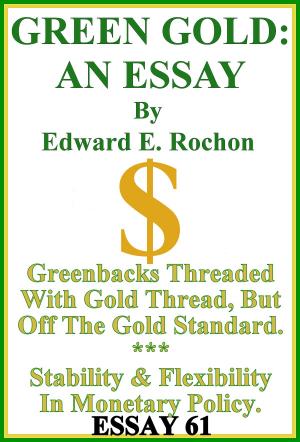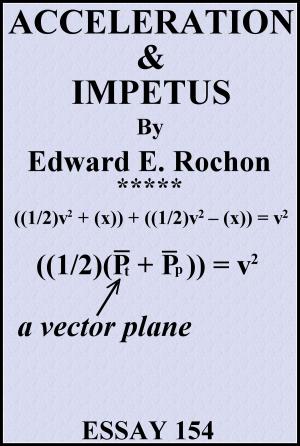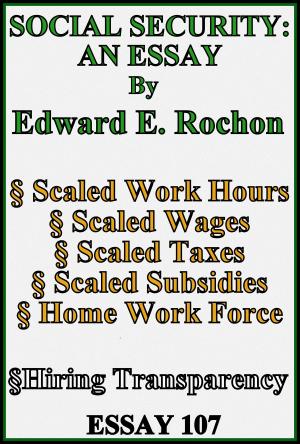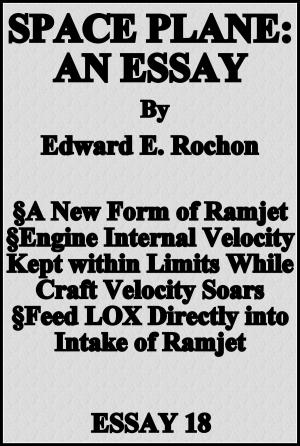Gold Standard: An Essay
Business & Finance, Economics, Money & Monetary Policy, Nonfiction, Social & Cultural Studies, Political Science, Politics, Economic Policy| Author: | Edward E. Rochon | ISBN: | 9781370883097 |
| Publisher: | Edward E. Rochon | Publication: | October 22, 2016 |
| Imprint: | Smashwords Edition | Language: | English |
| Author: | Edward E. Rochon |
| ISBN: | 9781370883097 |
| Publisher: | Edward E. Rochon |
| Publication: | October 22, 2016 |
| Imprint: | Smashwords Edition |
| Language: | English |
A brief preface notes this is a follow-up to my previous essay. It speaks of conspiracy theories and money at the present time. Chapter 1 makes the point that prior ages that debased money to cover shortages in coinage and income flow were in error in method. They should have pegged the price of gold above international market prices, left their coinage as it was, other than to break down old coins into smaller coins at the pegged price, thus increasing money supply and increasing the value of any assets in the treasury. We comment on how the prince makes this work and of the consequences in local and international trade. Chapter 2 notes that the purpose of the first chapter was to show how gold is really a promissory note in metal. That this was not understood in the past, led princes and treasurers to debase money rather than to peg the price of gold in the local market above the international rate. It talks about debt and credit, the rich and poor and the problems of social conflict. Chapter 3 expands on the points made in the first two chapters, using some history for amplification. It explains how modern states can tax debt and reduce budget deficits. Tax credit card payments; tax money expansion in lieu of borrowing from the Federal Reserve.
A brief preface notes this is a follow-up to my previous essay. It speaks of conspiracy theories and money at the present time. Chapter 1 makes the point that prior ages that debased money to cover shortages in coinage and income flow were in error in method. They should have pegged the price of gold above international market prices, left their coinage as it was, other than to break down old coins into smaller coins at the pegged price, thus increasing money supply and increasing the value of any assets in the treasury. We comment on how the prince makes this work and of the consequences in local and international trade. Chapter 2 notes that the purpose of the first chapter was to show how gold is really a promissory note in metal. That this was not understood in the past, led princes and treasurers to debase money rather than to peg the price of gold in the local market above the international rate. It talks about debt and credit, the rich and poor and the problems of social conflict. Chapter 3 expands on the points made in the first two chapters, using some history for amplification. It explains how modern states can tax debt and reduce budget deficits. Tax credit card payments; tax money expansion in lieu of borrowing from the Federal Reserve.
